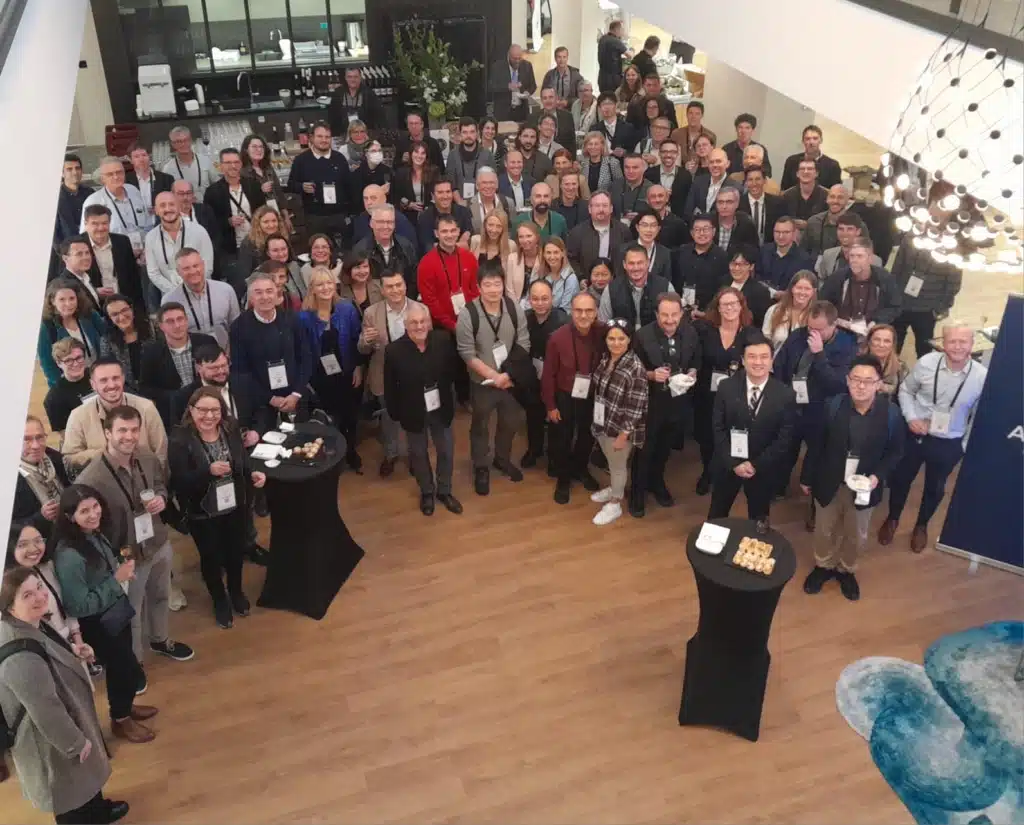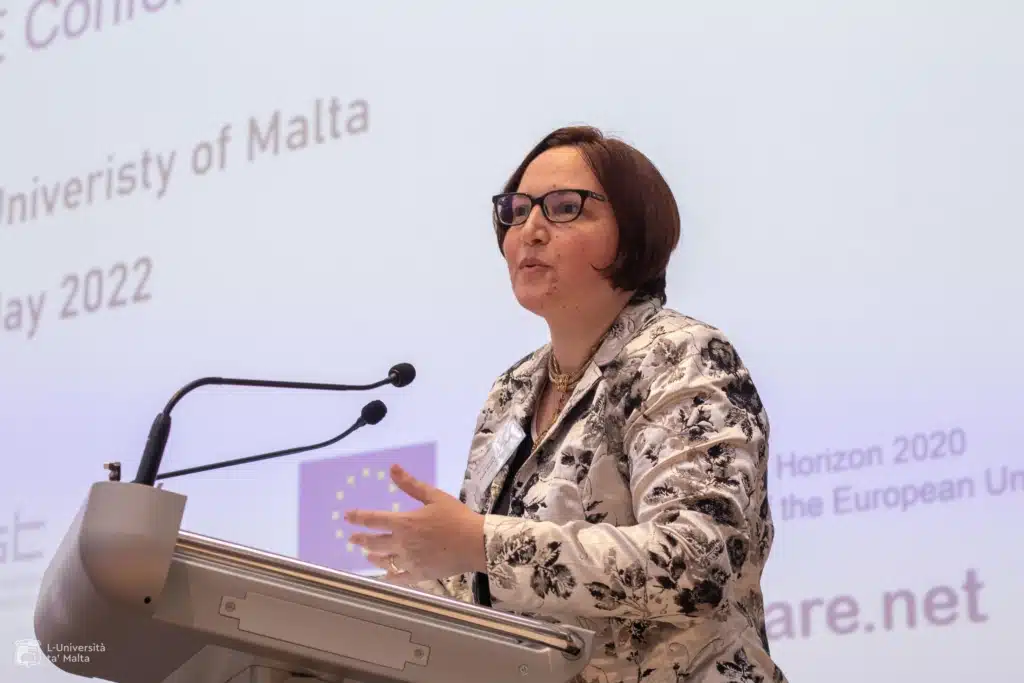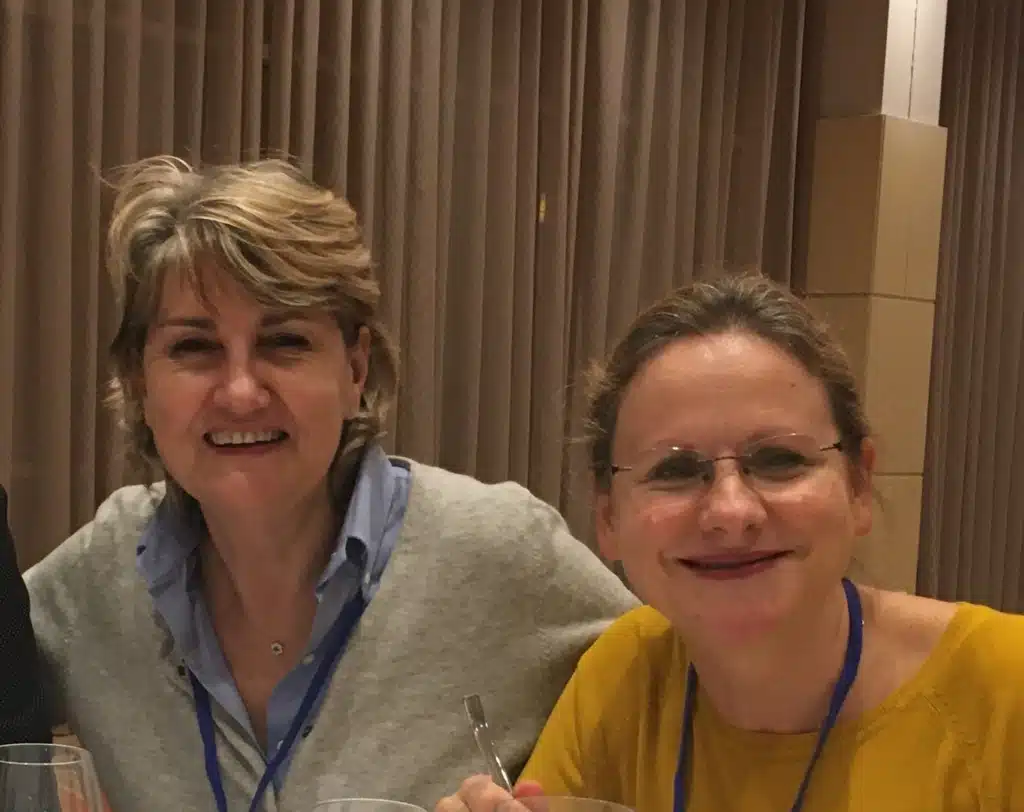Cancer is a major challenge in the modern world, affecting millions of people across Europe. The prevalence of this disease requires the development of innovative and complementary treatment approaches. COST Actions are at the forefront of cancer research, driving innovation and progress in treatment.
Three examples, among the many COST Actions dedicated to cancer research, include initiatives focusing on novel drug resistance mechanisms, advancing gynaecological cancer awareness and research, and developing innovative diagnostic tools using nanotechnology. These and other collaborative efforts are contributing to the fight against cancer, providing hope and better outcomes for patients.
The power of astatine-211
Among the available treatments, astatine-211 is emerging as a game-changer in cancer therapy. By exploiting its unique properties, the COST Action Network for Optimized Astatine labeled Radiopharmaceuticals (NOAR) aims to establish it as the gold standard for treating certain cancers in Europe.
Astatine-211’s unique properties make it an excellent option for treating residual diseases such as blood, ovarian, and certain types of brain cancer. “One of the key advantages of Astatine-211 is its ability to precisely target cancer cells”, says the Action Chair Dr Jean-François Gestin of the ARRONAX group (Accelerator for Research in Radiochemistry and Oncology at Nantes Atlantic, France). “Its alpha-emitting properties minimise damage to healthy tissue while maximising the therapeutic effect. Because of its relatively short half-life of 7.2 hours and the potential for outpatient treatment and better waste management, astatine-211 represents a safer, more patient-friendly option for cancer therapy,” explains Jean-François.
Alpha success
NOAR has achieved remarkable results through collaboration and partnerships by increasing astatine-211 production and defining optimal transportation conditions. The Action has advanced radiolabeling chemistry, which has facilitated the development of novel radiopharmaceuticals. Additionally, it has laid the groundwork for a Phase I clinical trial targeting non-muscle invasive bladder cancer. A key aspect of NOAR’s mission is the establishment of Astatine-211 nodes strategically located across Europe. These nodes will serve as hubs of innovation and will include essential facilities such as cyclotrons, radiopharmacy, imaging centres and patient injection facilities. NOAR’s goal is clear: to standardise treatment protocols and ensure equitable access to cutting-edge cancer therapies for all European patients.
NOAR has actively engaged with international scientific communities through congress presentations, symposiums, and events like the Nuclear Medicine Europe conference. The Action has also collaborated with global partners such as the US Department of Energy and the Japan Atomic Energy Commission. “Proud of this achievement, we have decided to continue the work of COST NOAR by creating an association (NOAR Europe) that will take over some of the work done”, says Jean-François Gestin. “A new page is being written that will be integrated into the World Astatine Community, and the NOAR Europe will represent the European part of this new consortium”.

“A new page is being written that will be integrated into the World Astatine Community, and the NOAR Europe will represent the European part of this new consortium.”
Dr Jean-François Gestin, Chair of NOAR Action
Advancing research for women and girls
The COST Action European network for Gynaecological Rare Cancer research: From Concept to Cure (GYNOCARE), led by Professor Jean Calleja-Aguis of the University of Malta, focused on rare gynaecological cancers. Despite the term ‘rare’, these cancers affect over 9 million girls and women every year. With more than a decade of experience in COST Actions related to pregnancy, the Chair saw the potential for COST to bring together experts from different fields to address these gynaecological diseases. “I wanted to finally see a COST Action combining women’s health and rare diseases, in particular rare gynaecological cancers,” she explains.
GYNOCARE’s results include bringing brachytherapy treatment for cervical cancer to Malta in early 2023, eliminating the need for patients to travel to London for treatment. This was achieved through collaboration between GYNOCARE members, the Sir Anthony Mamo Oncology Centre, and the International Atomic Energy Agency.
“I wanted to see a COST Action combining women’s health and rare diseases, in particular rare gynaecological cancers.”
Prof. Jean Calleja-Aguis of the University of Malta, Chair of GYNOCARE

The scientific impact of the Action is evident in the 40 Open Access publications, contributions to the European Journal of Surgical Oncology and updates to the international reference textbook on rare gynaecological cancers. One notable innovation was the VeressPLUS needle, developed in collaboration between the University of Malta and Delft University of Technology. This surgical instrument improves the safety of invasive procedures by reducing the risk of overshooting – the needle going too deep after penetrating the abdominal wall (by at least 50%), particularly important for patients with unusual pelvic anatomy.
Jean Calleja-Aguis proudly notes: “We managed to complete this Action successfully and achieve even more than expected”.

The dedication and hard work of the members of GYNOCARE has not gone unnoticed. Prof. Calleja-Agius has been presented with the Giovan Giacomo Giordano NIAF Lifetime Achievement Award for Ethics and Professionalism in Medical Research.
Dr Sharon O’Toole, Leader of a GYNOCARE working group, won the Best Healthcare Campaign 2023 Award for Excellence in Public Relations. GYNOCARE has empowered patient advocacy groups by involving them in research and clinical trials to make their voices heard, raise awareness and address health inequalities. The network has also contributed to policy discussions, connecting with major EU initiatives such as the EU Mission on Cancer and Europe’s Beating Cancer Plan.
Extraterrestrial gynaecology
One of the Action’s outstanding achievements has been its collaboration with the National Aeronautics and Space Administration (NASA), resulting in a publication on the potential cancer risks of space travel for female astronauts This research examines how microgravity and radiation affect radiation-induced cancers such as lung, thyroid, breast and ovarian cancers in female astronauts and highlights the need for more research to ensure safer space missions and effective post-flight care.
The fingerprints of cells
One of the most fascinating outcomes of the COST Action Functional Glyconanomaterials for the Development of Diagnostics and Targeted Therapeutic Probes (GLYCONanoPROBES) was the identification of the many specific conditions required to activate an effective personalised immune response against cancer. The Action explored the vital role of carbohydrates in cell functions. Every cell is coated with carbohydrates in the glycocalyx, which helps with cell signalling, adhesion, and growth. The glycocalyx acts like a fingerprint, helping the body recognise healthy, diseased, and foreign cells. This is crucial for cancer detection, as changes in these carbohydrates can serve as tumour markers. These markers are essential for early cancer detection, prognosis, and developing more targeted and effective cancer treatments.
GLYCONanoPROBES also facilitated groundbreaking collaborations between scientists working on innovative nano-sized materials, such as chitosan (a natural biopolymer derived from chitin, found in the shells of crustaceans), hydrogels, peptide fibres, and nanoparticles. The Action worked with experts in glycans, which are sugar-containing molecules that play crucial roles in cell functions. These partnerships have led to the development of new glycosylated nanomaterials (nano-sized materials with attached sugar molecules) that have been the subject of patents and publications. These materials show promise in treating bacterial infections, combating antimicrobial resistance, and acting as immunostimulants in cancer treatment, either alone or in synergy with chemotherapy or radiotherapy.
Empowering young researchers and innovators
All three COST Actions have significantly benefited young researchers and innovators by integrating them into expert networks and fostering personal relationships through Short-term Scientific Missions (STSMs). These research visits have enabled young researchers to acquire new skills and strengthen their CVs, thus improving their prospects for academic career advancement and new positions.

“One of the most gratifying aspects of our network has been to see early career researchers grow both personally and scientifically, reaching milestones that will shape the future of glycan-based research.”
Prof. Cristina Nativi of the Università degli Studi di Firenze and Prof. Carmen Galan of the University of Bristol, Vice-Chair and Chair of GLYCONanoPROBES
The NOAR Action has fully dedicated its STSMs and Inclusiveness Target Countries (ITC) conference grants to young researchers. In the case of the GYNOCARE Action, young researchers and innovators from countries and regions that normally do not have access to collaborative opportunities have not only benefited from the networking tools (e.g. training schools, conferences, STSMs) offered by COST but have also been empowered to start organising their own national conferences through their professional societies in collaboration with local patient support and advocacy groups. Several young researchers in GLYCONanoPROBES secured academic positions or received prestigious grants such as Marie Skłodowska-Curie Actions or EU bilateral projects. A notable highlight was the organisation of a joint symposium of young researchers and innovators from GLYCONanoPROBES and another COST Action, Innovation with Glycans: new frontiers from synthesis to new biological targets (INNOGLY). At this event, participants shared their research results and discussed future collaborative initiatives, exemplifying the spirit of cooperation and innovation fostered by COST. Prof Carmen Galan of the University of Bristol and Prof. Cristina Nativi of the Università degli Studi di Firenze, Chair and Vice-Chair of GLYCONanoPROBES, reflect: “One of the most gratifying aspects of our network has been to see early career researchers grow both personally and scientifically, reaching milestones that will shape the future of glycan-based research”.
Additional information
Watch the videos produced by the Actions:
Read more about Network for Optimized Astatine labeled Radiopharmaceuticals (NOAR)
Read more about European network for Gynaecological Rare Cancer research: From Concept to Cure (GYNOCARE)
Read more about Functional Glyconanomaterials for the Development of Diagnostics and Targeted Therapeutic Probes (GLYCONanoPROBES)
Read more about Innovation with Glycans: new frontiers from synthesis to new biological targets (INNOGLY)



